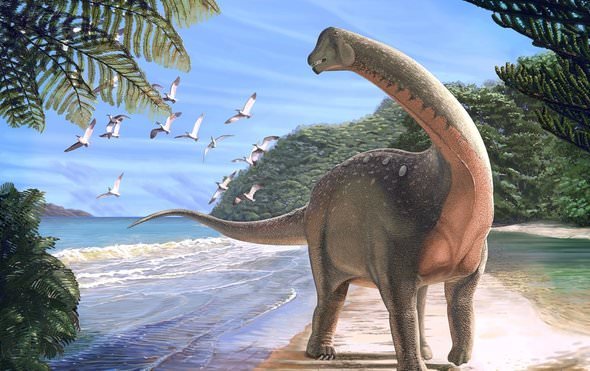
66 million years ago, specifically between the middle age (the Great Reptile Age and three geological ages: Triassic, Jurassic and Chalk) and the modern era of life, there was a massive extinction that wiped out more than three-quarters of life on Earth, including dinosaurs and reptiles Which is characterized by its enormous size.
Despite the success of science in documenting this period geologically, there is a time lag in the continent of Africa specifically, reaching about 30 million years between (94-66 million years) by the end of the Cretaceous. That gap remained a mystery to science.
Over the past two decades there have been serious scientific attempts to fill this gap, but to no avail, until an Egyptian research team succeeded in discovering the first dinosaur in Egypt and Africa to document this period and fill that gap.
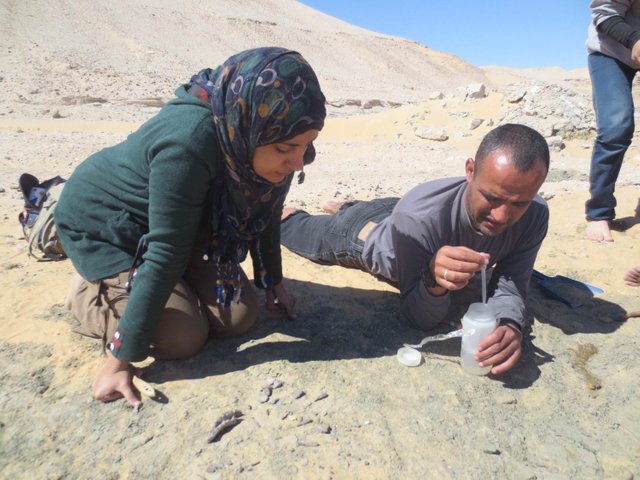
In the research published in the journal Nature Ecological and Evolution, on Monday, the dinosaur discovered in the (Tnida) area in the oases of the Western Desert of Egypt was named "Mansourasaurus" and carries the scientific number (MUVP-200). The characters MUVP, A short name of Mansoura University Center for Vertebrate Excavations in English, relative to the university to which the research team belongs.
"This dinosaur is the first of its kind in Africa, documenting the last 30 million years of the Cretaceous period (135 to 65 million years ago) and all dinosaurs," said Hisham Salam, assistant professor of geology at Mansoura University and leader of the research team. Previously discovered belonged to the pre-Cinomanian period, a late cretaceous period dating back more than 95 million years ago.
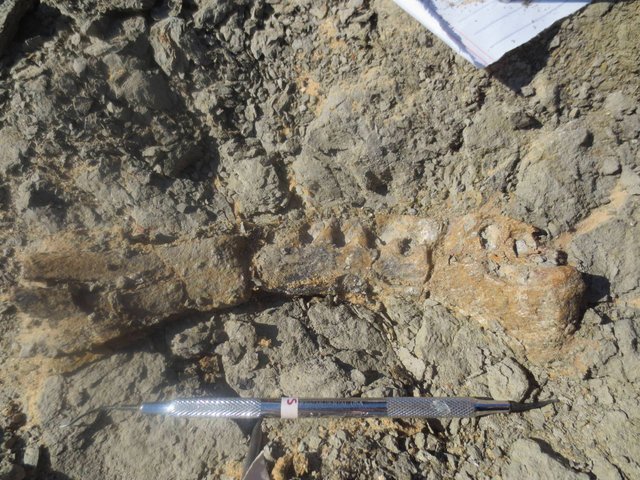
In an interview for "Science", Salam added that this dinosaur is the sixth discovered in Egypt, but the first in Egypt and Africa, which documents the geological era. He is the oldest complete dinosaur found in Africa for this period. It is 10 meters long and weighs about 5 tons. It is about 75 million years old, and everything related to it has been documented, based on in-depth studies of the geological maps and the precise fossils discovered.
He pointed out that the weight of this dinosaur is relatively low, compared to dinosaurs giant plant of the same species, which lived in the Cretaceous, weighing up to 70 tons. Peace explains this with a hypothesis that has not yet been confirmed, namely the injury of dinosaurs in this period by dwarfism.
He explained that this period of time was documented by the discovery of fossils of dinosaurs in Europe, South and North America, Asia and the island of Madagascar, but remained insurmountable in Africa until the dinosaur was found in the (oasis of Dakhla) in Egypt, in December of 2013.

He confirmed that Mansorasaurus was the first evidence in the history of science to prove that the continents of Africa and Europe were geologically connected at this time. The research team discovered a presence of dinosaur discovered in Europe.
According to the study, the close relationship between the discovered dinosaur and its relatives in Europe indicates that terrestrial vertebrates were dispersed and spread between Eurasia and North Africa after Africa separated from South America 100 million years ago.
Salam noted that the team included the largest number of researchers, for the first time in history in Egypt and the Arab world, to discover such fossils that require harsh working conditions that may require camping in the desert for weeks.
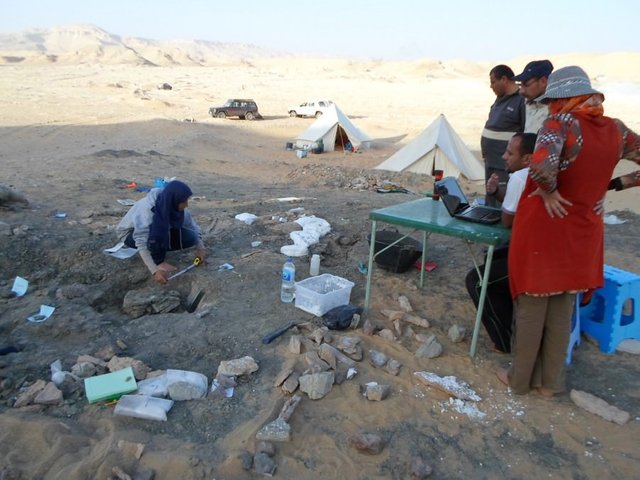
The only and the complete one of its time
For his part, Mohammed Sameh, director of the Department of Geology and Excavations in the Nature Protection Sector and National Focal Point of UNESCO World Heritage Sites, described the discovery as the only one of its kind in Africa. Of dinosaurs.
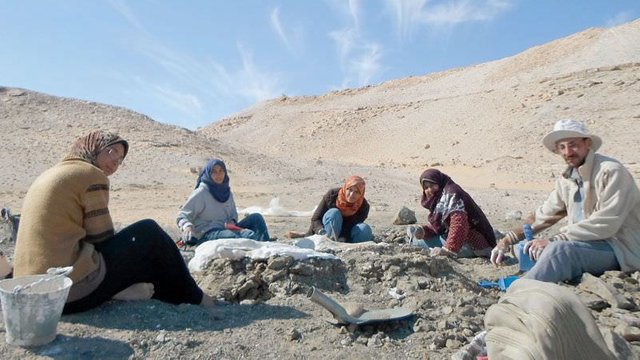
شكرا للمشاركة الجميلة.
حصلت على تصويت من
@arabsteem curation trail !
Downvoting a post can decrease pending rewards and make it less visible. Common reasons:
Submit